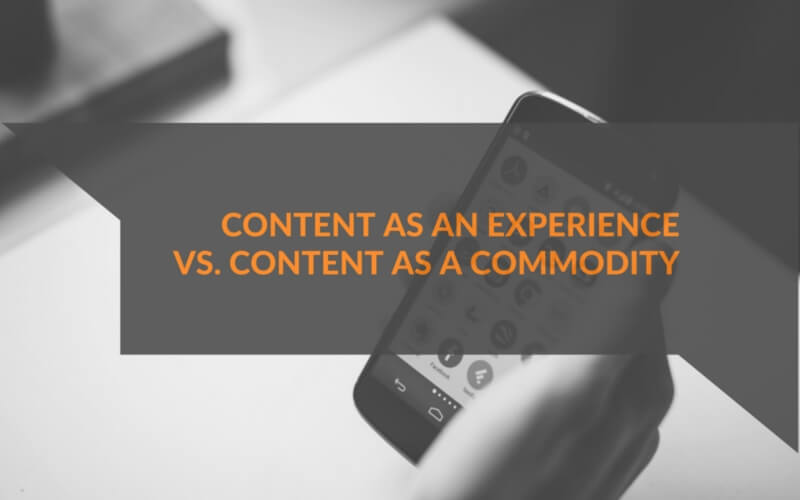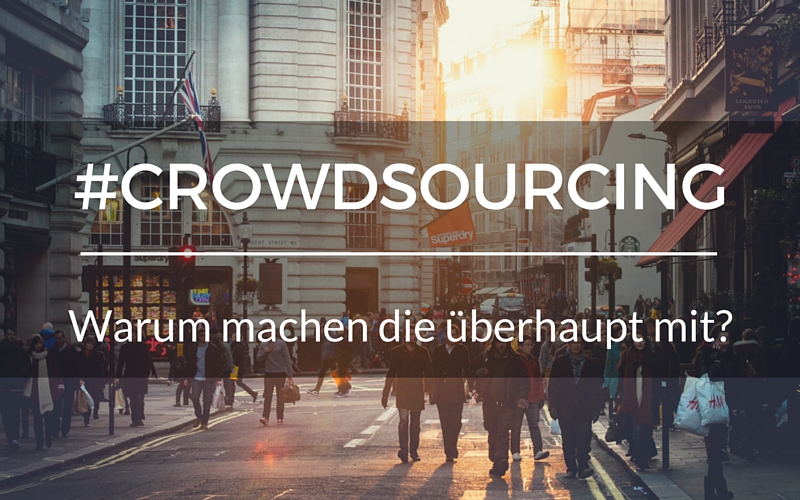Do you still think of content as a commodity (using content for marketing) or content as an experience? A discussion in a Google Plus community made me think…
Today, I was asked for an opinion on Twitter about a question asked by A. Gaß in a Google Plus Community.
„What do you think about that? Is there any truth in it?
Some companies think marketing on #Snapchat is not a valuable investment because the content disappears quickly. But in reality, that’s not the case, said Shaun McBride (Snapchat celebrity and artist) in the #SocialMediaMarketing podcast hosted by Michael Stelzner of Social Media Examiner.
Shaun said: „On many social media platforms, viewers scroll through content quickly. And even though those posts will be there forever, viewers will never see it again. Marketers are only grasping for 50% of users’ attention at a time, and those users never look back.„
This made me think because to me, the wrong question is being answered here.
If the fact that content disappears quickly is really an issue for brands, there is still a long way to go. Let me explain.
Think story and strategy first
See the first issue here is that a solid Content Marketing strategy is built to provide value to the right people at the right time, so that it’s a win-win situation. Think content and audience first, not channel first.
If you know what you want to talk about (We need to think about content marketing strategically“) jumping on the new hype channel („We need a Snapchat Strategy!“) you won’t encounter this problem.
In order to do that, ask yourself (in that order):
- What do we want to achieve with our Marketing Strategy (by the way: „sales“ is a result, not a goal)
- What Story do we want to tell / what’s our role in the lives of (potential) customers?
- How do we align that with providing value to the user? (Finding the sweet spot!)
- Which formats are best and where can we find the people we want to reach?
Content helps shaping the customer experience
The second problem with brands approaching content marketing this way is that content should be understood as part of an experience. I get the fact that brands want to make the most of their content, so the argument that it disappears to quickly on Snapchat is somehow valid.
However it’s quite a superficial approach to content.
As I said earlier, content only makes sense if it aligns with the story you want to tell, a message you want to convey and if it provides value for the recipient (either in a functional or emotional way). Everything else is just stuff (don’t we have enough of that?)
If you think about content as part of an experience you are building step by step, you will not just see what’s obvious / superficial (the format / piece of content itself) but also start seeing how it fits into the experience you want people to have when they’re in touch with a MESSAGE you are trying to get across.
[Tweet „Content only makes sense, when you are clear about the story you want to tell“]
Have a content repurposing / content recycling plan
On a very practical level: if someone really told me „I don’t want to use Snapchat because the content disappears“, the first thing I’d say is: well you don’t lose that asset do you? Do you erase it once you’ve uploaded it? Don’t you think you could use it again one day?
How can brands produce content without having a plan or at least be aware of the fact that you’ll want to re-use pieces of content which performed well in the past. You need a Content Strategy as a solid foundation for your content marketing before throwing out all you marketing dollars to produce content…
Develop a structure which will allow you to keep track of you content e.g. by archiving and tagging it. Make it accessible for later… You don’t need to establish a whole system first, you can adopt an agile approach to it and develop it step by step, but integrate repurposing in you content strategy!
Key takeaways:
If you select a channel as a means to communicate with people out there just because everybody’s talking about it and you just had to jump on the new train in Marketing-town, you need to re-evaluate your approach to selecting channels.
- Think about the story you want to tell / the message you’re trying to convey and how it fits into the general strategy. Try extrapolating the substance, the benefit for people on the receiving end.
- Does it fit together? If so, you have found an opportunity. If it doesn’t: keep calm and don’t even start creating content without a purpose.
- Keep in mind that you’ll want to maximize content ROI by re-using it later… Everything else would be foolish…
What would you have replied to this question in the community? Have you ever had similar experience?



